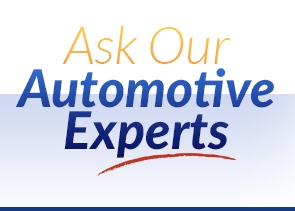Last month, on our auto repair shop blog, I wrote about how the development of driverless cars has spawned many crash avoidance systems that are now common in many mass produced cars on the road right now. I also said it may be a long time before you can jump in the back seat of a car and have the vehicle take you somewhere. Now I’m not so sure it will be such a long time. Almost every week there is some new news about an auto manufacturer or Google or Apple getting closer to actually bringing a self driving car to market.

Information from a local Audi dealer, tells us that an Audi A7 drove itself from Palo Alto California to Las Vegas, a distance of about 560 miles. Tesla has a feature called autopilot that allows the driver to let go of the pedals and steering wheel at highway speeds. The car will follow the flow of traffic, staying in the lane. If the driver wants to pass, he simply puts on the turn signal and the car looks for an opening in traffic and then makes the lane change. Volvo expects to have 100 self driving XC90s on the road in Sweden by 2017 for a 2 year test.
A fully self driving car is probably still 10 years away, but what is known as “piloted driving”- that is a car that can drive itself but requires the driver to intervene in critical situations- is just around the corner. Audi says that “piloted driving” will be available on the next generation A8 available by the end of 2016. (If only the car would take care of its own repairs and service.) The Volvo XC90 that goes on sale later this year has the ability to follow a car in stop and go traffic without any input from the driver.
The remaining technical hurdle to autonomous driving is further software development like how to recognize a child darting out in the street and how to reconcile conflicting information from different sensors like when the Audi A7 driving itself to Las Vegas got a tumbleweed stuck on its grill.
The legal hurdles might be harder to overcome. First, all state laws would need to be changed to allow a car to drive without a driver in control. With a strong safety record, states could modify their laws. I think the bigger legal hurdle is litigation. In 2009 and 2010 some Toyotas experienced ‘Toyota sudden acceleration’ known as “unintended acceleration”. Our own Toyota repair shop was never asked to repair one of these but supposedly there were enough instances that the government had to get involved. Congressional hearings were held and the president of Toyota was grilled and insulted, Toyota sales tanked and the stock lost 14%. In the end only a couple of crashes were caused by the car itself and that was the result of wrongly installed floor mats that were already being replaced due to a Toyota recall.
All the rest of the incidents attributed “unintended acceleration were operator error, stepping on the gas instead of the brake or as NHTSA referred to it, “pedal misapplication”. Toyota ended up paying the US Government a fine of $1.2 billon and Toyota lost a class action suit in the amount of $1.1 billion for “economic loss”. If the auto companies are exposed to this risk because they couldn’t prove that the car didn’t cause the crash, they may think twice before putting large numbers of cars on the road.
Our Audi Repair Shop will continue to stay on the forefront of automotive technology. Keep in touch and subscribe to our blog for updates.


